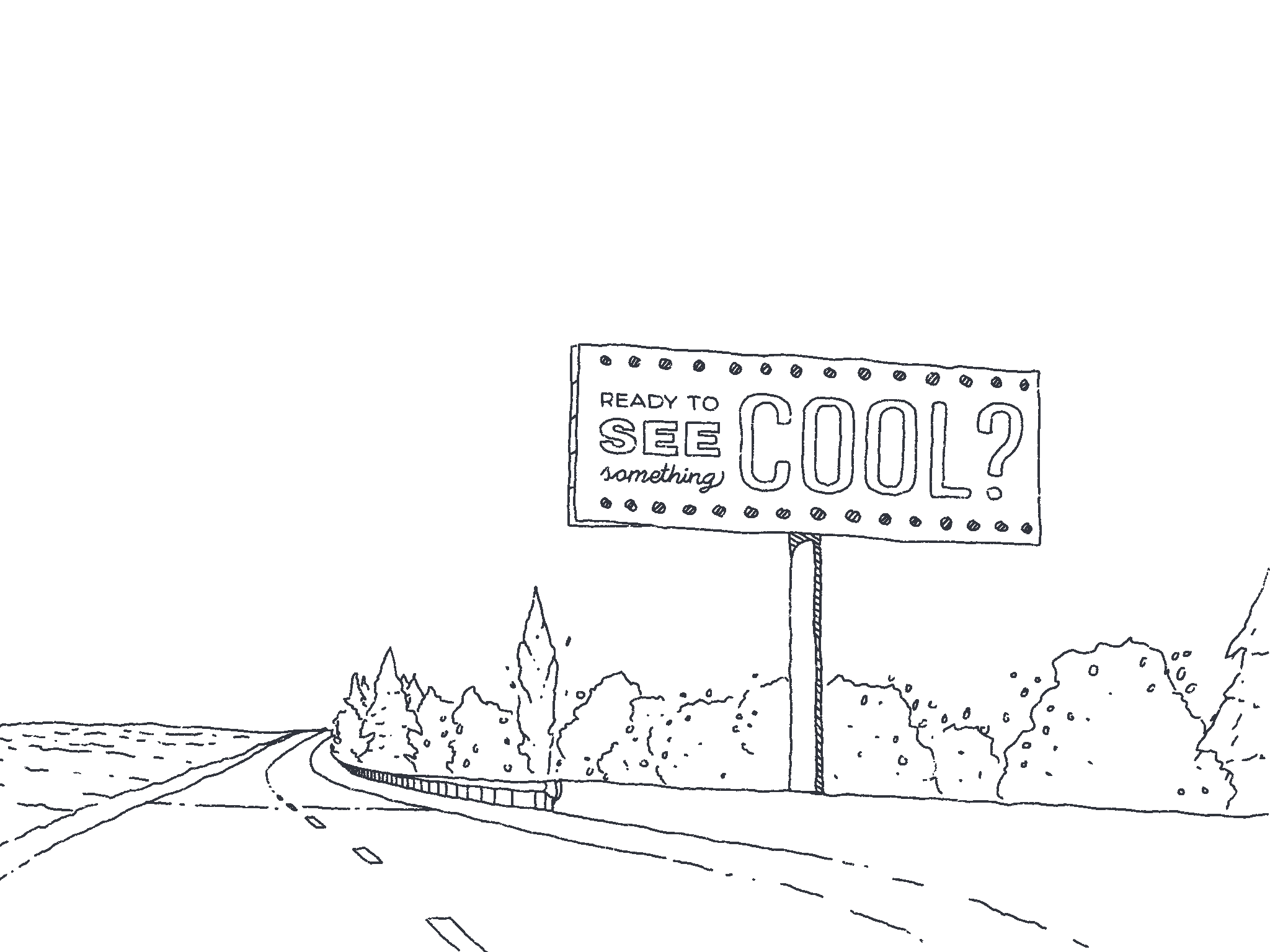First Comes Strategy, Then Come The Goods
STARTING THE CREATIVE PROCESS
Have you ever noticed how hard it can be to come up with an inspiring, creative solution on the spot sometimes? For instance, take the "What are we having for dinner?" scenario--people generally look out into space for a second, say "I don't know, what do you want?" and a heated discussion usually follows.
One way to resolve this problem is to define it with several points in mind.
1) Who is the problem affecting?
2) What challenges are getting in the way?
3) What skills do I have to help solve the problem?
4) Are there problems within the problem itself?
In the scenario above we could determine that the people being affected are my family. The challenges are a lack of time and energy to dedicate to the time it takes to make a decision and cook. I am skilled in visual design. And a problem within the problem is that there is a need for a visual reference in order to speed up the decision-making process. As a visual designer, I could create an illustrated menu that lists all that our family enjoys making and eating. By defining these 4 key points, we not only establish a good reason for creating something but also a well of knowledge to gather inspiration from.
This is why every effective visual solution requires evidence-based processes and why I start every project by defining what that evidence is.

OK, DINNER WITH FAMILY IS ONE THING--HOW DOES THAT APPLY TO MY BUSINESS?
Just as the scenario above created a menu to solve a problem within my audience, we are looking to solve the problems within YOUR audience. We want to know the what, who, why, when, where as it relates to your audience, the competition and the visual direction we choose to move forward with.
For instance, If we know that your product is commemorative jewelry and determine a potential audience space is people in high school, that alone is a great start to understanding an appropriate direction on where to focus a visual design effort.
We would start by ensuring you're equipped with a unique brand identity that makes you instantly recognizable, a social media campaign to inspire a following and a website to facilitate access to your product or service by getting to know them and positioning your brand to meet their needs. If we know that high school students are going to do a lot of socializing during their lunch hour, then we can plan a social media post time during the hours of 11AM-12PM, with content that meets them in that space and provides an impactful experience.
With a great experience comes curiosity and that is an opportunity to inspire trust—trust in you, the people you deal with and the product, service and brand that you promote.

HARNESSING INSPIRATION
As you can see from the examples above, defining what’s necessary is a powerful and efficient way to put you on the right path for creating something impactful. Ready to get started? We begin by defining these areas to help us establish the inspiration and structure for your next project (also known as: The Creative Brief).
Your Business and The Deadline: Your industry, the type of business and due date defined.
Personas: This is where we define your target audience. Who are they? What do we know about them? What are they capable/incapable of? What pain points can your business serve to alleviate? What's a day like in their shoes and how can we make those shoes more comfortable? This creates a map of how your company intends to solve the problems specific to their areas of importance. Take the impact 2020 had on our entire way of living: lack of hand sanitizer, lack of face masks, lack of bread, lack of toilet paper... How many of us were online seeking answers to these problems and how many companies were able to deliver on our needs? An impactful company knows its audience and they are rewarded with investment and trust.

Competitive Analysis: Here, we are going to define the line of competition in your field--what they are doing well and where opportunity exists. This helps us form an effective strategy on how to position your brand within your target market and gain/maintain relevance within it.
USP (Unique Selling Point): In this section, we define the unique aspect of your brand and what it will mean for the audience you intend to serve. It is the value that you provide to your target audience that no one else does. For instance, if you focus on inclusivity, then you want your business to reflect that value. A great example of this in action is Target's line of adaptive Halloween costumes made for wheelchair-bound children.

Mission Statement: Your mission statement provides the story behind your business. Why is it your mission? How did it come about? What are the core principles your company lives by? This is important to establish trust and trust is paramount. While losing trust (Samsung's exploding phones or Volkswagon's problems with emissions tests) won't mean the death of a business necessarily, it can be devastating to your credibility, which is why we will get to know your core values and how we intend to stay true to them.
The Technical Skills I Provide
STARTING WITH DEFINING THE AREAS OF OPPORTUNITY FOR YOUR BUSINESS AND ESTABLISHING A STRATEGY THAT ADDRESSES YOUR BRAND NEEDS, THESE ARE THE AREAS I FOCUS IN TO ENSURE THAT YOUR VALUE IS PROPERLY COMMUNICATED.
-
Brand Identity and Logo Design
-
Responsive Web Design
-
Instagram Campaign Design
-
Illustration
-
Print and Digital Advertising
Curious to see what some of this could look like in action?
Or maybe you're ready to get started?
